20 years of TAMEST: Supporting innovation at UT Southwestern and beyond
Insights shared on the origin, evolution, and enduring legacy of the Texas Academy of Medicine, Engineering, Science and Technology
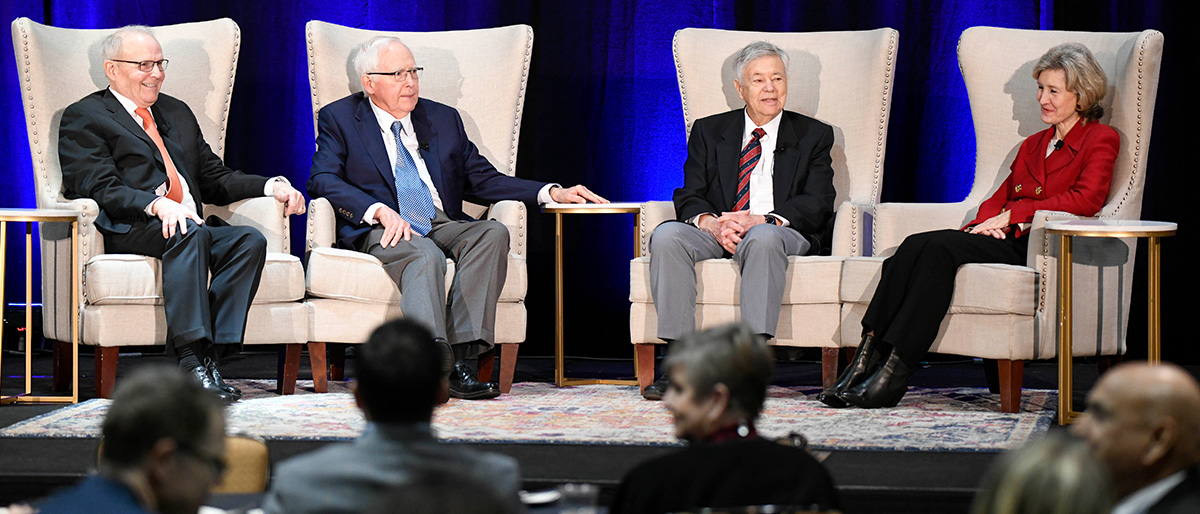
Few people understand the slogan “Everything’s bigger in Texas” better than The Honorable Kay Bailey Hutchison. As the state’s first female U.S. senator, she was a vocal advocate in Washington to ensure Texas got its fair share of federal dollars.
So when she joined the Senate Appropriations Committee in late 1996 and discovered that a much smaller state than Texas was receiving more funding for scientific research, she knew something had to be done.
“I remember quite clearly. She asked, ‘How could a tiny little state like Maryland get more than we do?’” recalled Michael Brown, M.D., Nobel Laureate and Professor of Molecular Genetics and Internal Medicine at UT Southwestern. “She was obsessed that Texas wasn’t getting its share of funding.”
Driven to address this disparity and elevate Texas’ research profile on the national stage, the senator initiated a five-year program to forge alliances among major research institutions in Texas and the leaders of federal agencies.
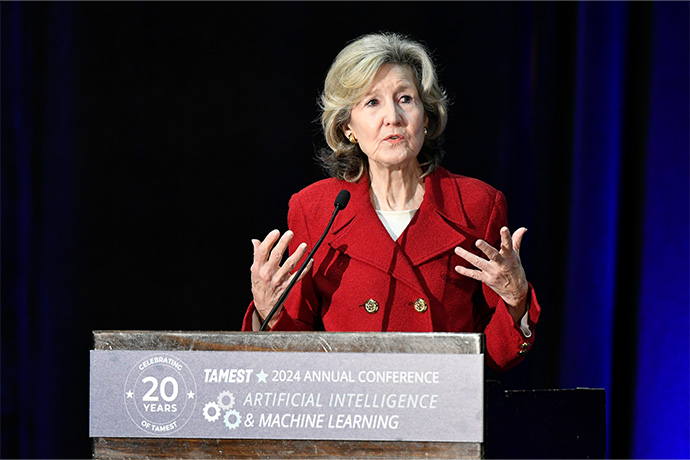
These efforts culminated in a summit of the state’s scientific leaders – presidents of several universities and two Nobel Prize recipients, including Dr. Brown – in the offices of Peter O’Donnell Jr., the late Dallas businessman and philanthropist who gave millions to support science and engineering in Texas. Within this pivotal gathering, the idea for the Texas Academy of Medicine, Engineering, Science and Technology (TAMEST) was born. It would pull its membership from the three National Academies: the National Academy of Medicine, the National Academy of Engineering, and the National Academy of Sciences.
In laying the foundation for TAMEST, the organizers were committed to creating a uniquely diverse group that focused on supporting and inspiring the next generation of researchers.
“We said we don’t want this just to be a meeting of old men because that’s what the Academies represented at that time,” Dr. Brown recalled. To spur future growth, they initiated a protégé program to bring in other promising scientists. “And it worked,” he said.
Two decades later, TAMEST has grown in size and stature – with members helping to recruit the best and brightest minds to Texas and collectively boosting the state’s competitively secured federal funding – to establish Texas as a premier hub for biomedical research and scientific innovation. When TAMEST convened for its first meeting in 2004, Texas was home to 166 members of the National Academies. Today, that number has more than doubled to nearly 350. UT Southwestern has 25 faculty who are members of the National Academy of Sciences and 21 members of the National Academy of Medicine – more than any other institution in Texas.
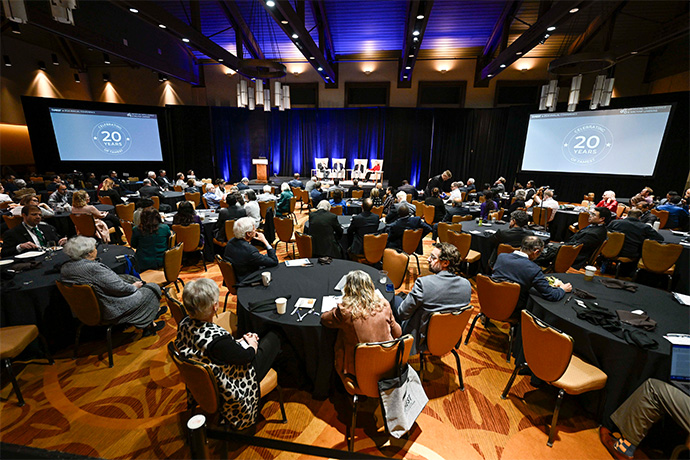
Reflecting back on two decades
At this year’s 20th annual conference in Austin in February, two of TAMEST’s co-founders, Sen. Hutchison and Dr. Brown, along with O’Donnell Foundation Chairman, President, and CEO William T. Solomon, reflected on the growth of the organization and its enduring impact on science.
“It’s like watching a flame,” Dr. Brown said. “You’re starting something with flint and steel, and suddenly there’s a little tiny ember burning, and then it gradually builds.”
With a central focus on artificial intelligence and machine learning, this year’s landmark conference reflected TAMEST’s commitment to supporting cutting-edge research and scientific advancement at preeminent institutions like UT Southwestern.
“What we envisioned is happening,” Sen. Hutchison said.
At the TAMEST convention, the UTSW tradition of clinical and research excellence continued to be recognized.
UTSW stars shine bright
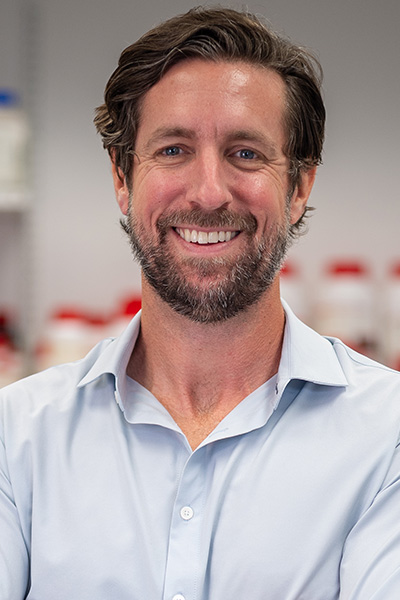
Vincent Tagliabracci, Ph.D., Associate Professor of Molecular Biology at UTSW, received the 2024 Edith and Peter O’Donnell Award in Biological Sciences for broadening the understanding of pseudokinases, a family of enzymes that play key roles in many physiological and pathological processes.
“Vinnie is among the greatest biochemists of his generation,” said Eric Olson, Ph.D., Chair and Professor of Molecular Biology, who nominated Dr. Tagliabracci for the award. “We expect these discoveries are only the tip of the iceberg.”
Additionally, Russell DeBose-Boyd, Ph.D., Professor of Molecular Genetics at UTSW, was awarded the Hill Prize in Biological Sciences for his research into a key mechanism necessary for cholesterol control.
“Researchers at UT Southwestern and across Texas are pursuing ideas with the potential for global impact,” said Lyda Hill, entrepreneur and founder of Lyda Hill Philanthropies, which funded the Hill Prize that is designed to accelerate high-risk, high-reward research ideas in Texas. “Through its critical work, TAMEST brings together many of our state’s leading innovators.”
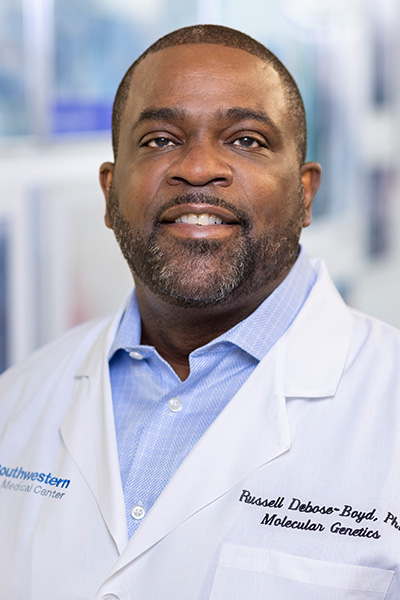
TAMEST also recognized four new members from UT Southwestern. Three became members when they were elected to the National Academies within the past year. Dr. DeBose-Boyd and Duojia Pan, Ph.D., Chair and Professor of Physiology, were elected to the National Academy of Sciences. Catherine Spong, M.D., Chair and Professor of Obstetrics and Gynecology, was elected to the National Academy of Medicine.
Saad B. Omer, M.B.B.S., M.P.H., Ph.D., Founding Dean and Professor of the Peter O’Donnell Jr. School of Public Health and a member of the National Academy of Medicine, became a TAMEST member with his move to Texas.
The “flame” continues to burn bright.
Dr. Brown, a Regental Professor, is Director of the Erik Jonsson Center for Research in Molecular Genetics and Human Disease. He holds The W.A. (Monty) Moncrief Distinguished Chair in Cholesterol and Arteriosclerosis Research and the Paul J. Thomas Chair in Medicine.
Dr. DeBose-Boyd holds the Beatrice and Miguel Elias Distinguished Chair in Biomedical Science.
Dr. Olson holds The Robert A. Welch Distinguished Chair in Science, the Pogue Distinguished Chair in Research on Cardiac Birth Defects, and the Annie and Willie Nelson Professorship in Stem Cell Research.
Dr. Omer holds the Lyda Hill Deanship of the School of Public Health.
Dr. Pan holds the Fouad A. and Val Imm Bashour Distinguished Chair in Physiology and is also a Howard Hughes Medical Institute Investigator.
Dr. Spong holds the Paul C. MacDonald Distinguished Chair in Obstetrics and Gynecology.
Dr. Tagliabracci is also a Howard Hughes Medical Institute Investigator and a Michael L. Rosenberg Scholar in Medical Research.

